
Roots
The story of textured hair, especially for Black and mixed-race individuals, is a living saga, etched into every spiral and curl, a testament to resilience and adaptation across generations. To understand how ancestral head coverings shielded this hair is to understand a profound relationship—one shaped by the sun, the spirit, and survival. It is to acknowledge the ingenious practices that arose from deep understanding of environmental pressures and cultural identity, practices passed down through whispers and hands, becoming part of a collective soul. What we consider modern hair science today often finds its echoes in these ancient wisdoms.
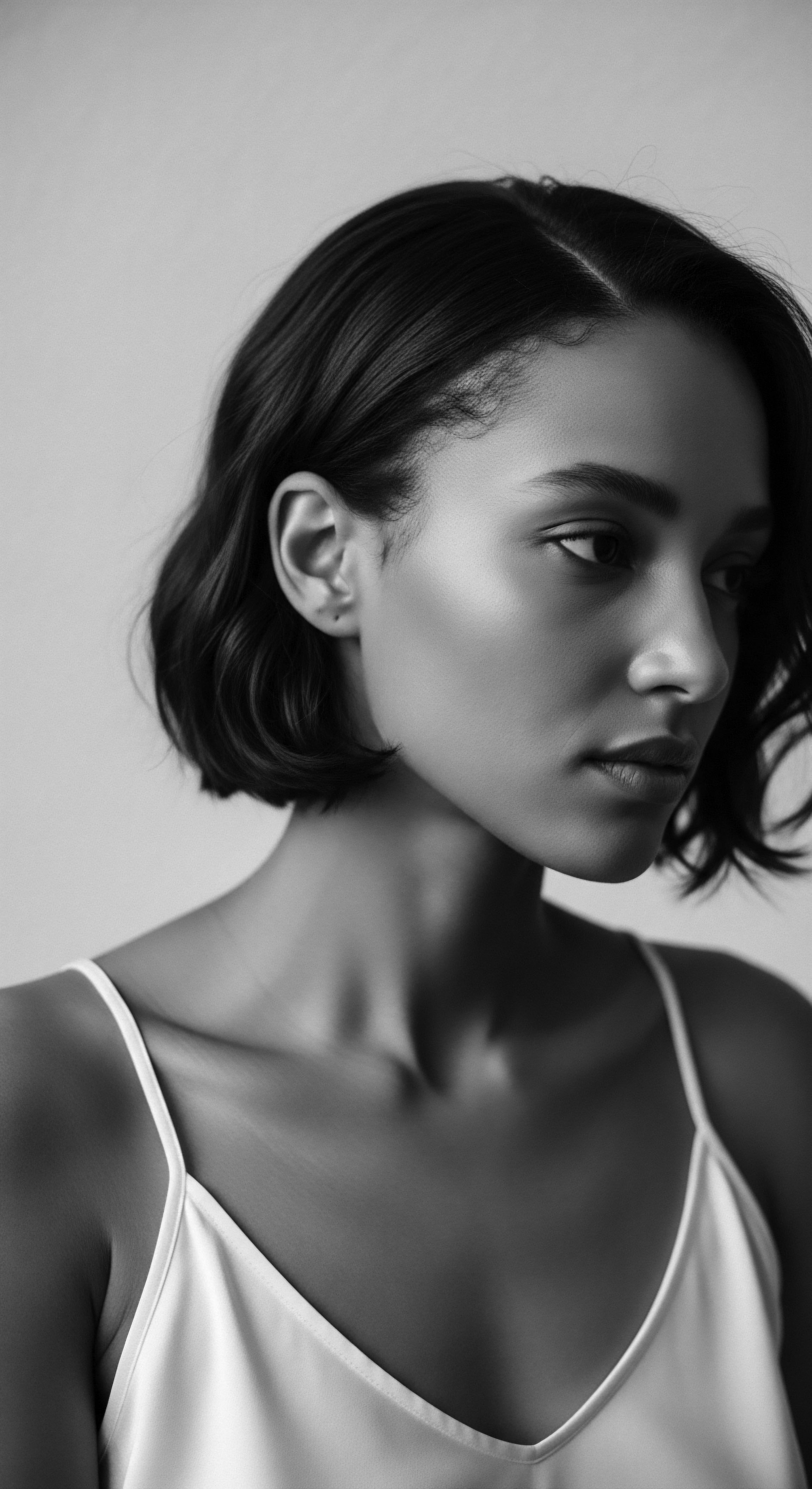
The Unique Structure of Textured Hair
Textured hair, with its characteristic coils and kinks, possesses a distinct anatomical blueprint. Unlike straight hair, which tends to be round in cross-section, textured strands are typically oval or elliptical. This unique morphology creates natural points of fragility along the hair shaft where the curl pattern bends sharply. These bends can be points of mechanical stress, making textured hair more susceptible to breakage if not properly cared for.
The cuticle, the outermost layer of the hair, lies less flat on coiled strands, which can lead to increased porosity and moisture loss. This inherent structure, however, is not a weakness; rather, it represents a remarkable evolutionary adaptation. Robbins (2012) suggests that the relatively sparse density and elastic helix shape of kinky hair allowed for an airy effect, increasing cool air circulation to the scalp, which was adaptive for early hominids in Africa facing intense UV radiation.
Ancestral head coverings provided a crucial layer of defense, mitigating environmental stressors that could compromise the delicate structure of textured hair.
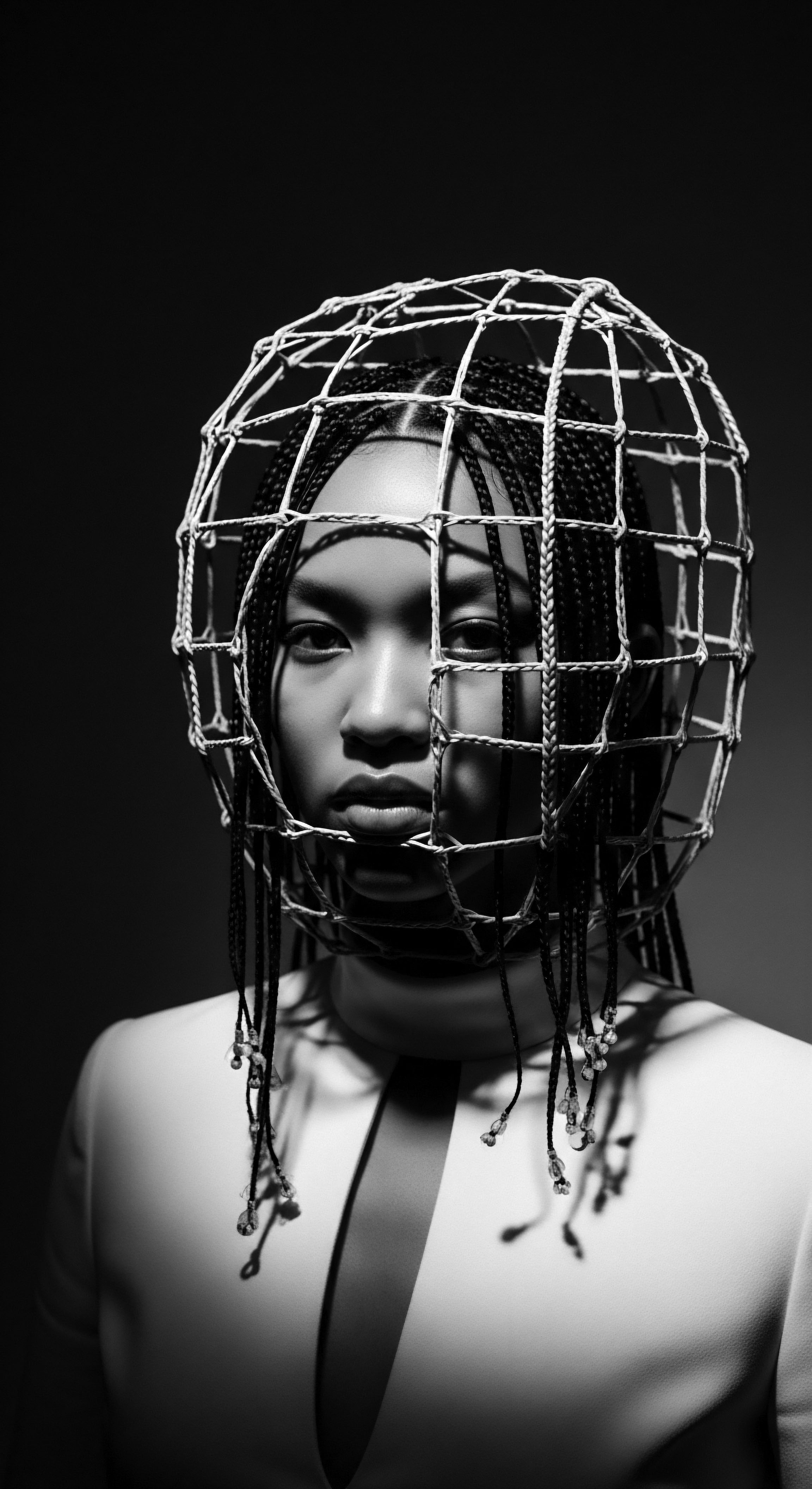
Environmental Threats and Ancient Shields
Consider the elements our ancestors faced ❉ relentless sun, abrasive dust, fluctuating humidity, and biting winds. Each presented a distinct challenge to exposed hair.
- Sun Exposure ❉ Just as skin can suffer from UV radiation, so too can hair. Prolonged sun exposure leads to cuticle damage, protein degradation, and color fade, leaving strands brittle and dry. Ancestral head coverings offered a direct physical barrier against these damaging rays.
- Dust and Debris ❉ In many environments, airborne particulate matter would cling to hair, making it coarse, dull, and prone to tangles. Head coverings kept these environmental pollutants at bay, maintaining the hair’s cleanliness and smooth surface.
- Moisture Imbalance ❉ Textured hair is susceptible to both excessive humidity, which causes frizz and swelling due to its porosity, and extreme dryness, which leads to brittleness and breakage. Head coverings, particularly those made from certain materials, could help regulate the micro-climate around the hair, preserving its delicate moisture balance.
- Physical Friction ❉ Daily activities, from labor to rest, could cause friction against hair, leading to breakage and tangles. Head wraps served as a protective sheath, minimizing contact with rough surfaces.
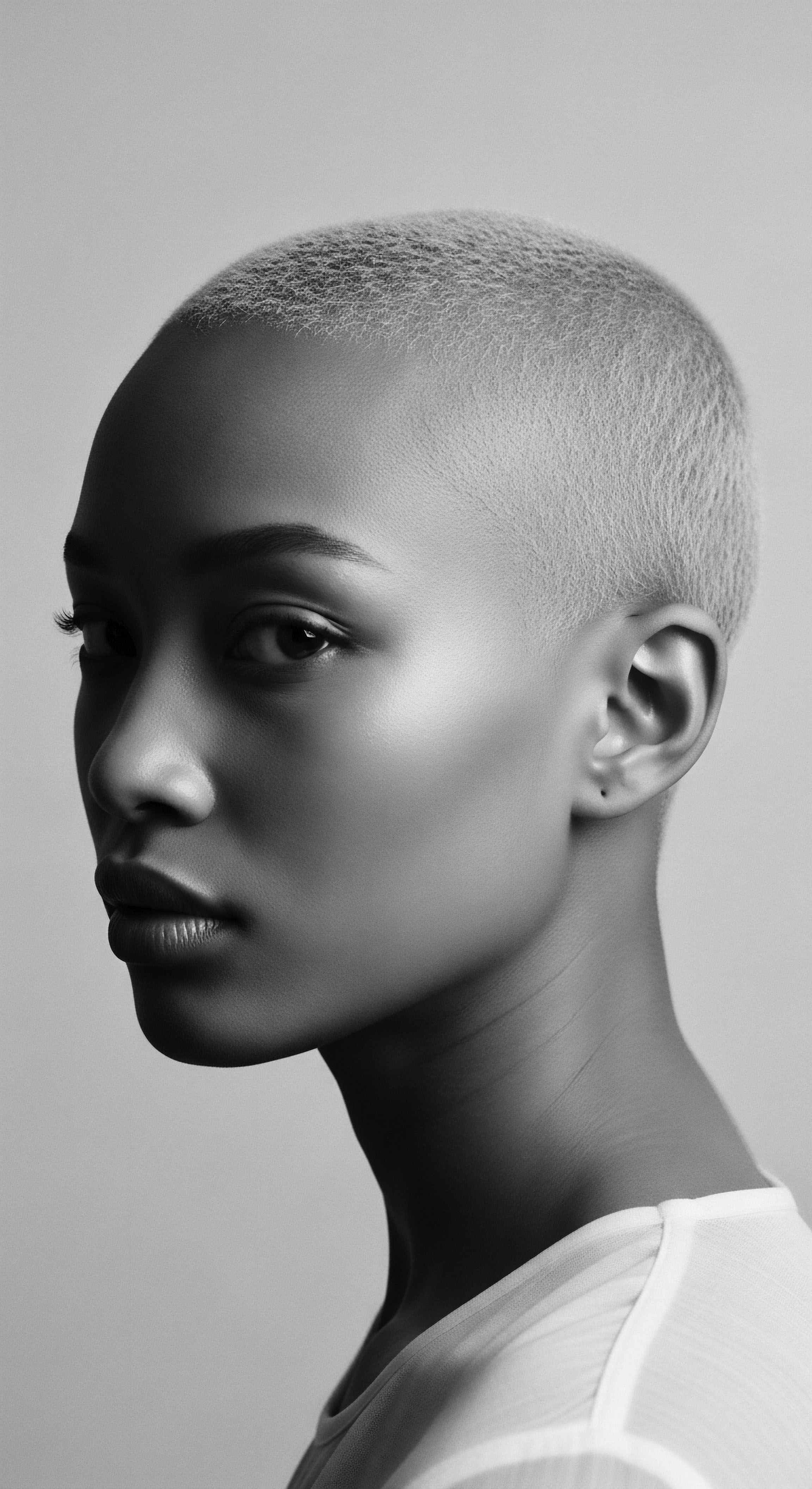
What Did Ancient Materials Offer Hair Protection?
The choice of materials for ancestral head coverings was rarely arbitrary; it was a blend of availability, cultural meaning, and practical efficacy. Fabrics like cotton, though common due to accessibility, could be quite absorbent, potentially drawing moisture from the hair. This understanding led to the development of specific wrapping techniques or the use of softer, smoother inner linings when possible. While historical accounts rarely specify silk or satin as widely used daily wear for hair protection due to their rarity and cost in many ancient African communities, the concept of a smooth barrier was inherent in practices.
The traditional African head wrap, often a long rectangular piece of fabric, was meant to cover and secure styles like braids or locks, offering a physical safeguard against external elements. The sophistication of these coverings lay in their layered function—simultaneously aesthetic, social, and protective.
| Material Often Used Plant Fibers (cotton, raffia) |
| Common Ancestral Application Daily headwraps, practical coverings |
| Protective Benefit for Textured Hair Physical barrier against sun and dust; can be layered. |
| Material Often Used Animal Skins/Hides |
| Common Ancestral Application Warmth, ceremonial wear, status symbols |
| Protective Benefit for Textured Hair Insulation, protection from harsh weather. |
| Material Often Used Smoother Plant-based Fabrics |
| Common Ancestral Application More specialized wraps, inner linings |
| Protective Benefit for Textured Hair Reduced friction; moisture preservation (if tightly woven). |
| Material Often Used These materials, chosen from the immediate environment, were adapted to create coverings that offered both practical defense and cultural expression for hair. |

Ritual
The ritual of adorning the head with coverings speaks volumes about a heritage of care, identity, and profound connection to self and community. Beyond their practical defense against the elements, ancestral head coverings were integral to the art and science of textured hair styling. They were not simply accessories; they were extensions of an understanding of hair health and the deep cultural meaning woven into every strand. This tradition, passed across generations, illustrates how the sacred space of hair became intertwined with daily life and celebration.

How Were Head Coverings Integral to Protective Styling?
Ancestral communities understood the vulnerabilities of textured hair long before modern trichology provided scientific explanations. They intuitively knew that minimizing manipulation and protecting strands from environmental stressors were key to length retention and overall hair health. This knowing led to the widespread adoption of protective hairstyles, which were then frequently shielded by head coverings.
Styles like cornrows, braids, and locs, deeply rooted in African societies, served as both cultural markers and practical ways to manage hair for long periods. The coverings provided an extra layer of defense for these intricate styles.
In many West African cultures, for instance, the practice of braiding hair tightly to the scalp, seen in styles like the Yoruba ‘geles’ or Ghanaian ‘dukus,’ found its logical extension in the headwrap. The wrap helped to keep these styles tidy, clean, and undisturbed, thereby prolonging their wear and reducing the need for frequent re-styling, which could otherwise cause undue stress on the hair. The ingenuity lay in combining the protective style with a protective covering, creating a synergy that optimized hair preservation.
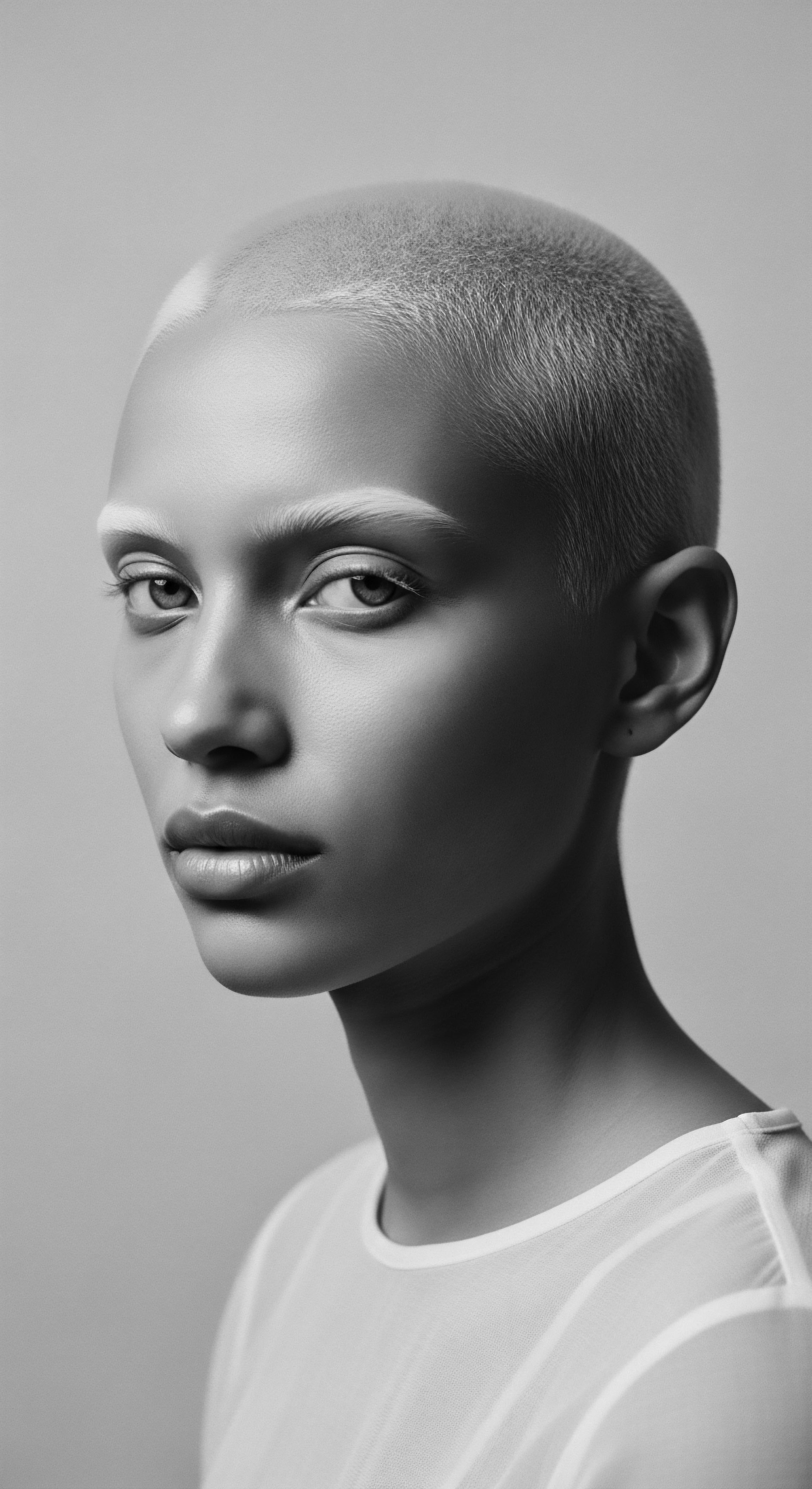
The Legacy of Nighttime Care
The wisdom of protecting hair while sleeping is not a modern innovation; it is a direct inheritance from ancestral practices. Cotton pillowcases, though seemingly innocuous, can be quite abrasive to delicate hair strands, drawing moisture away and creating friction that leads to frizz and breakage. Our ancestors, through observation and inherited wisdom, learned to mitigate this. Before the widespread availability of smooth, non-absorbent fabrics like silk or satin, other natural materials and techniques were employed to safeguard hair during rest.
While the specific materials varied by region and era, the fundamental purpose of nighttime coverings remained constant ❉ to create a barrier between hair and rough surfaces, preserving moisture and preventing tangles. The very existence of the modern bonnet, so central to many Black women’s nighttime routines, directly echoes this historical necessity. It is a quiet testament to the enduring understanding that hair needs a sanctuary during periods of vulnerability.
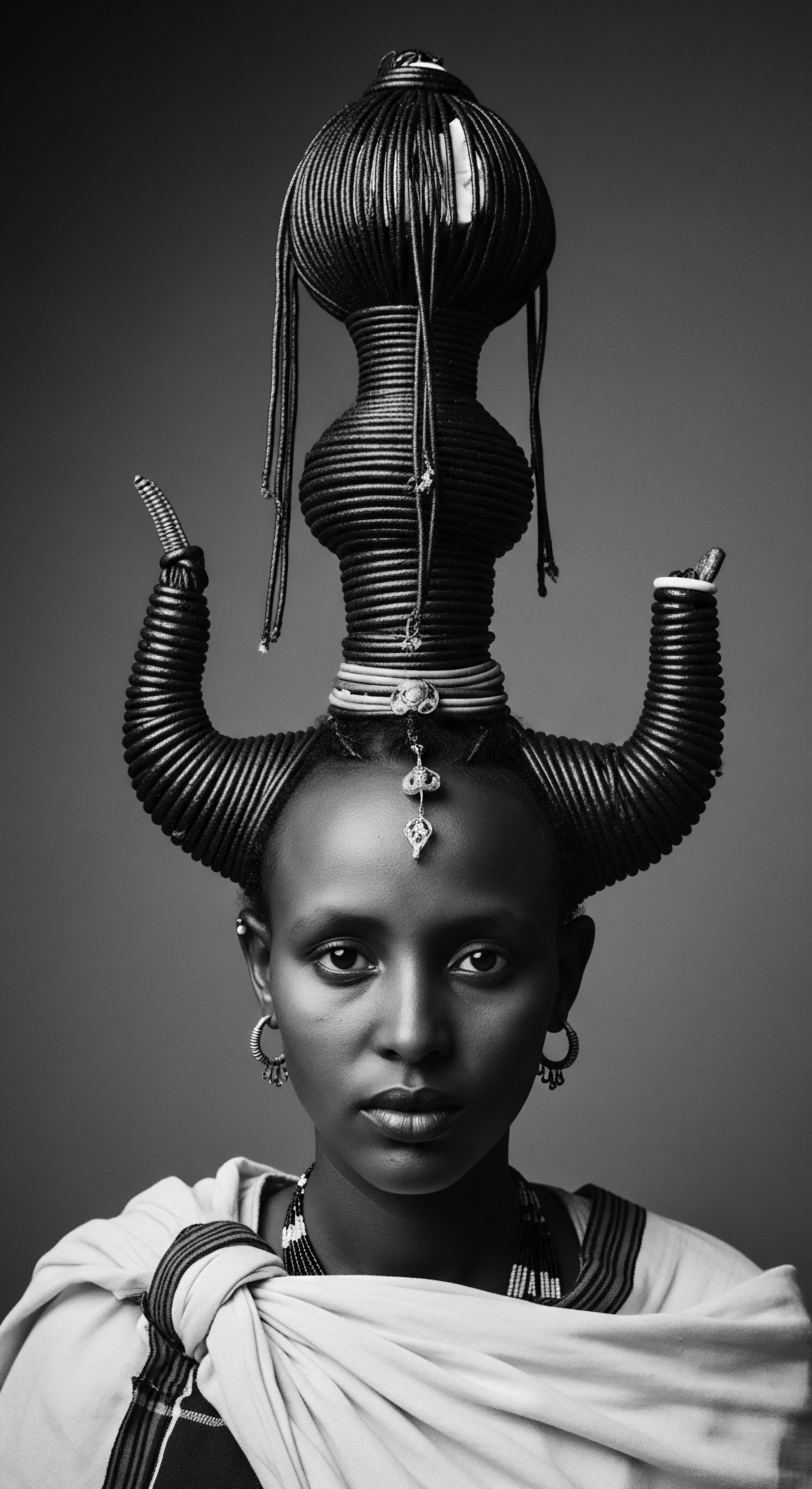
Traditional Tools and Adornments with Head Coverings
The toolkit for textured hair care in ancestral times went beyond just combs and oils. It also included the fabrics and techniques associated with head coverings. The way a headwrap was tied, the specific folds, and the adornments added could convey nuanced messages about social status, marital status, or even spiritual beliefs.
Specific examples of cultural head coverings and their historical associations:
- Gele ❉ Worn by Yoruba and Igbo women in Nigeria, these elaborate headwraps signified status and were often donned for celebrations. Their intricate tying provided both aesthetic beauty and structural protection for styled hair.
- Doek ❉ Common in South Africa and Namibia, the ‘doek’ represented cultural pride and womanhood, often reflecting tribal affiliations through specific colors or patterns. It served as a protective shield for hair.
- Tignon ❉ Mandated for free Black women in 18th-century Louisiana by law to denote social status, this headwrap was defiantly transformed into a statement of fashion and resistance, decorated with rich fabrics and elaborate styles, showcasing resilience in the face of oppression.
These coverings, whether simple or ornate, were not just worn; they were crafted. The act of tying, the selection of fabric, the communal sharing of styles—all formed a ritualistic practice that connected individuals to their heritage.
The tradition of head coverings for textured hair is a vibrant thread connecting ancestral practices to contemporary self-care, preserving both the physical integrity of strands and the cultural narrative of a people.
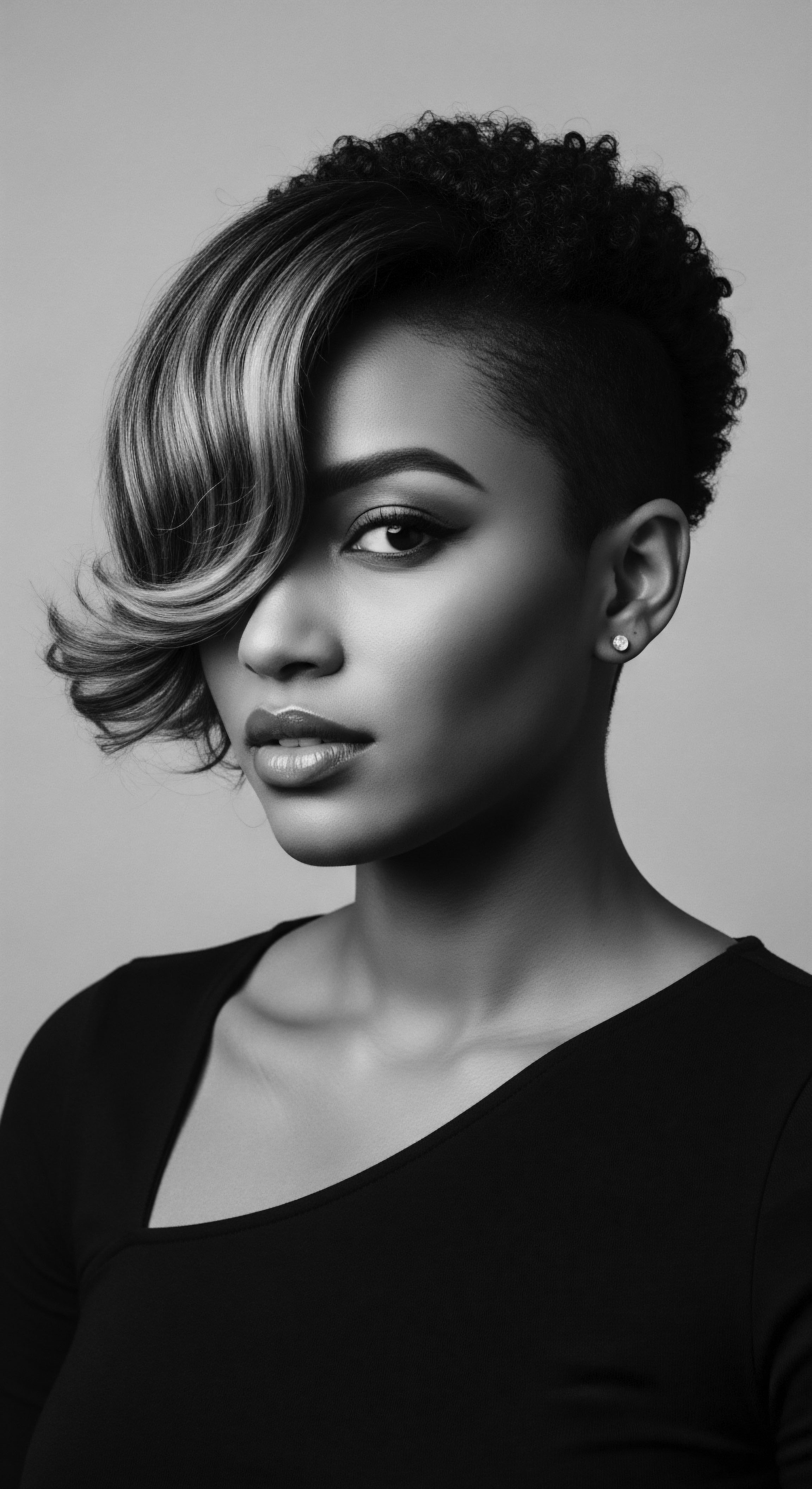
Relay
The deep understanding of how ancestral head coverings shielded textured hair extends beyond simple historical observation. It demands an examination of how these practices, rooted in necessity and cultural meaning, laid groundwork for contemporary holistic care. This enduring legacy speaks to a sophisticated, embodied knowledge that protected physical hair while simultaneously preserving cultural identity and spiritual connection across millennia. The wisdom of our forebears, often encoded in what might seem like simple adornments, presents a powerful counter-narrative to Eurocentric beauty ideals and validates the inherent qualities of textured hair.

How Do Ancestral Practices Inform Modern Hair Regimens?
The core principle behind ancestral head coverings—protection from environmental aggressors and minimization of manipulation—remains a cornerstone of healthy textured hair regimens today. The understanding that harsh sun, dust, and friction could weaken strands or disrupt intricate styles led to consistent covering practices. This is directly echoed in modern recommendations for protecting hair, whether it is using scarves for sun defense or choosing satin-lined bonnets for sleep.
The seamless transition from traditional protective styles, such as braids, twists, and cornrows, to their contemporary counterparts, often worn beneath head coverings, shows a continuous thread of wisdom. These styles reduce daily handling and exposure, thereby preventing damage and promoting length retention.
A significant example lies in the historical use of bonnets and night coverings. Research supports the efficacy of smooth materials like silk and satin in reducing friction and moisture loss, crucial for preventing breakage in textured hair. Dr. Michael Chen, a dermatologist at Pacific Skin Institute, notes that “the molecular structure of satin creates a frictionless surface that allows hair to glide freely as you toss and turn at night,” forming a protective barrier.
This scientific validation simply confirms what generations of Black women knew and practiced ❉ safeguarding hair during sleep is non-negotiable. This continuity of practice, from scraps of fabric in oppressive eras to modern luxurious satin bonnets, is a powerful indicator of inherent ancestral knowledge and its lasting impact on textured hair care.

The Holistic Connection to Hair Wellness
Ancestral wellness philosophies viewed hair as an extension of one’s spirit and identity, not merely an aesthetic appendage. This holistic perspective meant that caring for hair involved not only external practices but also consideration for internal well-being and spiritual alignment. Head coverings, in many communities, were also tied to spiritual protection and modesty. This spiritual dimension, often lost in modern, purely cosmetic approaches, provided an additional layer of intentionality to hair care.
Indigenous hair care practices, whether from Africa or other global cultures, often integrated locally sourced botanicals. For example, some Native American tribes used plants like yucca or soapwort as hair washes and animal greases to add shine. While not always directly related to head coverings, these practices demonstrate a deep ecological awareness and resourcefulness, a heritage of deriving hair health solutions from the surrounding environment. The covering would then preserve the benefits of these natural applications.
The enduring value of these traditional approaches is that they consider the complete person and their environment.
| Ancestral Wisdom Protecting hair from elements (sun, dust) |
| Modern Scientific Understanding UV damage, particulate matter accumulation, cuticle integrity |
| Connection to Head Coverings Physical barrier; reduced exposure to environmental aggressors. |
| Ancestral Wisdom Minimizing hair manipulation |
| Modern Scientific Understanding Reduces mechanical stress, prevents breakage and split ends |
| Connection to Head Coverings Preserves styles; extends time between washes/styling. |
| Ancestral Wisdom Maintaining hair moisture |
| Modern Scientific Understanding Porosity management, humectant properties, lipid barrier preservation |
| Connection to Head Coverings Traps humidity; prevents evaporative loss, especially at night. |
| Ancestral Wisdom Considering hair as part of holistic well-being |
| Modern Scientific Understanding Scalp health, stress reduction, self-care benefits |
| Connection to Head Coverings Ceremonial or daily use linked to spiritual and mental health. |
| Ancestral Wisdom Ancestral practices, including head coverings, reveal an intuitive understanding of textured hair's needs, often validated by contemporary scientific inquiry. |

Head Coverings as Symbols of Resistance and Identity
Beyond their protective attributes, head coverings have served as powerful symbols of resistance and enduring identity for Black women, particularly through periods of oppression. The transatlantic slave trade sought to strip individuals of their cultural markers, including their hair. Yet, head coverings became a means of defiance. In 18th-century Louisiana, the Tignon Laws forced free Black women to cover their hair in public, intending to signify inferiority.
However, these women transformed the mandated tignons into elaborate, decorative headwraps, asserting their dignity and artistic expression, turning a symbol of oppression into a badge of cultural pride. This act of reclaiming and transforming a tool of subjugation into a statement of selfhood showcases the inherent strength and creativity embedded in textured hair heritage. This resilience is a profound aspect of the head covering’s legacy.
The journey of ancestral head coverings reflects a triumphant narrative of resistance, self-expression, and the unwavering preservation of textured hair heritage against systemic attempts to erase it.
The continuing presence of headwraps and bonnets in Black communities, from everyday wear to celebratory occasions, underscores their enduring cultural relevance. They connect present generations to a long line of ancestors who understood the intrinsic value of their hair and the wisdom in shielding it. This knowledge, passed from elder to youth, forms a living archive, ensuring that the legacy of textured hair care, deeply intertwined with head coverings, thrives.

Reflection
As the sun dips below the horizon, casting long shadows that remind us of time’s passage, we might find ourselves pulling a soft bonnet over our coils, or perhaps tying a vibrant scarf before venturing out. In these simple, seemingly routine gestures, we participate in a lineage as old as time, a heritage passed down through generations. Ancestral head coverings were never just pieces of cloth; they were silent guardians, woven from necessity, cultural expression, and an intrinsic understanding of textured hair’s delicate yet powerful nature.
They were shields against harsh elements, yes, but also vibrant canvases proclaiming identity, status, and spirit. Each fold, each knot, each choice of fabric carries the echo of a profound wisdom, a soulful connection to strands that have journeyed through history, witnessing both beauty and struggle.
To tend to textured hair today, drawing upon the practices of covering and protecting, is to honor this deep past. It is to recognize that the pursuit of hair health is, for many, an act of remembrance, a re-claiming of wisdom that survived displacement and oppression. The strength of a single strand, with its intricate helix, mirrors the collective strength of a heritage that refused to be unravelled. Our connection to these ancestral practices is not merely nostalgic; it is a vital, breathing part of who we are, informing our self-care, our community, and our ongoing journey towards holistic well-being.

References
- Robbins, C. R. (2012). Chemical and Physical Behavior of Human Hair. Springer Science & Business Media.
- Tharps, L. (2001). Hair Story ❉ Untangling the Roots of Black Hair in America. St. Martin’s Publishing.
- Walker, A. (2001). On Her Own Ground ❉ The Life and Times of Madam C.J. Walker. Scribner.
- Byrd, A. & Tharps, L. (2014). Hair Story ❉ Untangling the Roots of Black Hair in America. St. Martin’s Griffin.
- Adeyemo, D. (2019). The Cultural Significance of Headwraps in African Societies. Journal of African Studies.
- Akerele, O. (2018). Headwraps as a Symbol of Identity and Resistance in the African Diaspora. Black Women, Gender & Family History.
- Gbetoglo, S. (2017). Traditional Hair Care Practices in West Africa. Ethnobotanical Journal.
- Brown, M. (2020). Hair, Identity, and the Black Woman’s Experience. University Press of Mississippi.
- Lewis, C. M. (2015). Tignon Laws and Resistance in Louisiana Creole Culture. Historical Journal of Louisiana.
- Sloan, D. (2020). The Daily Social Distancing Show with Trevor Noah ❉ A Comical (and Profound) History of Black Hair. Comedy Central. (While a TV show, this references historical context and research by comedians on the topic, suitable for an editorial exploration that isn’t purely academic).
